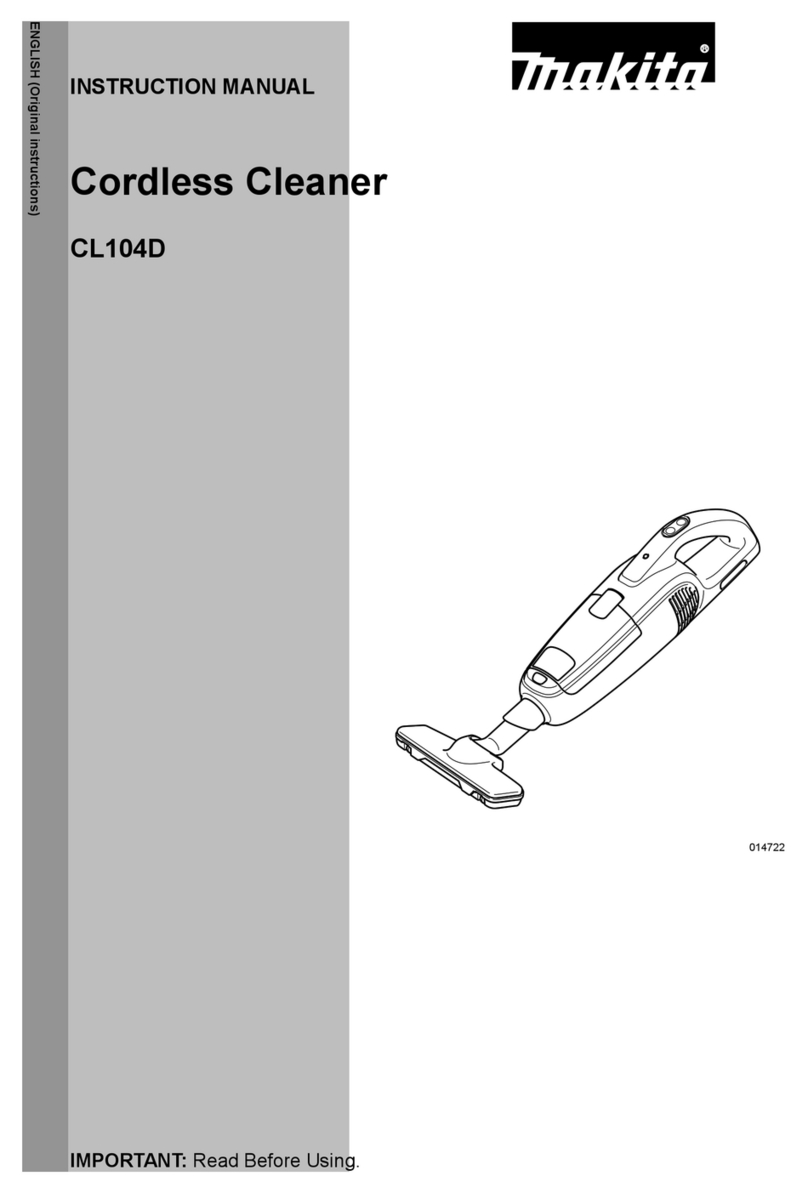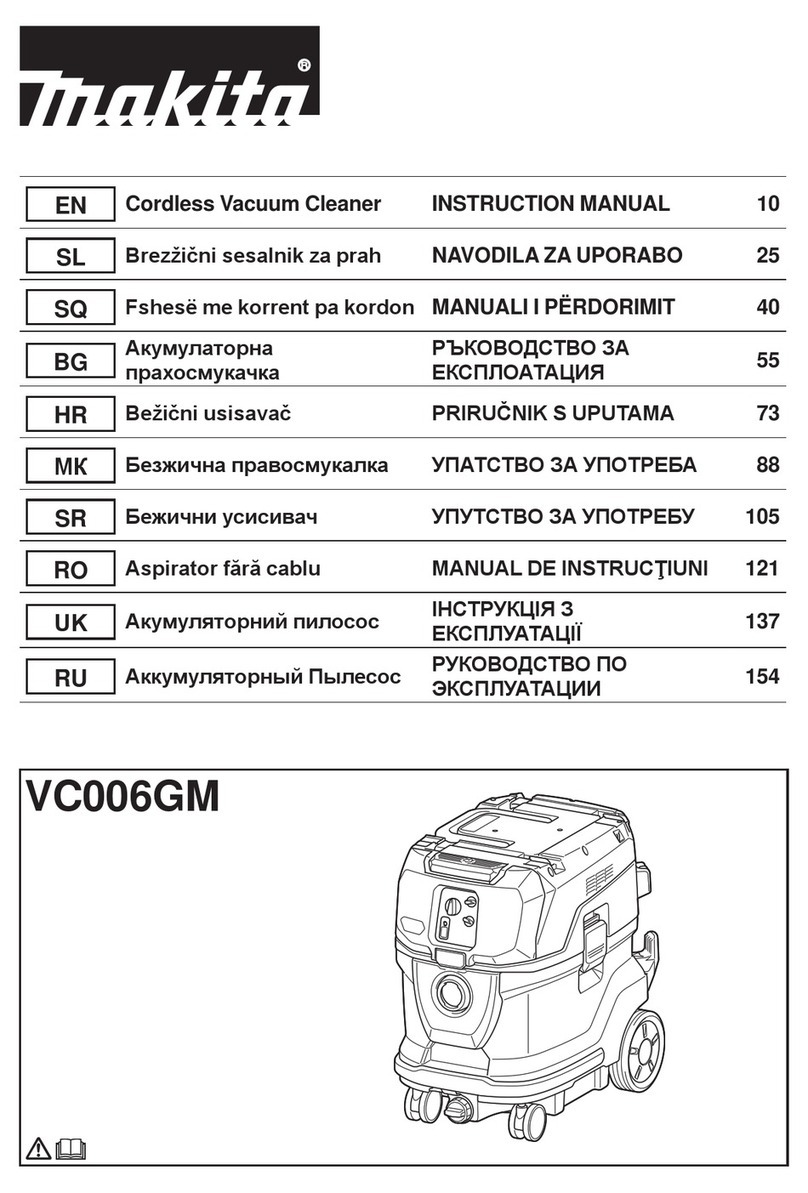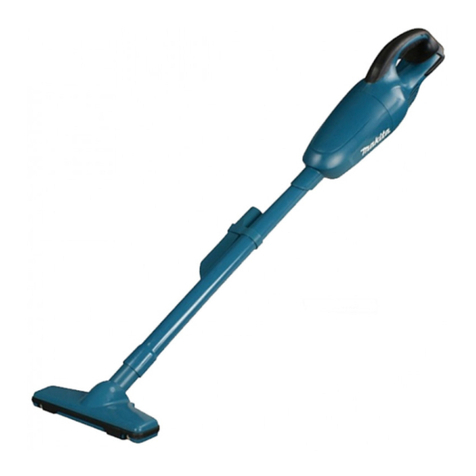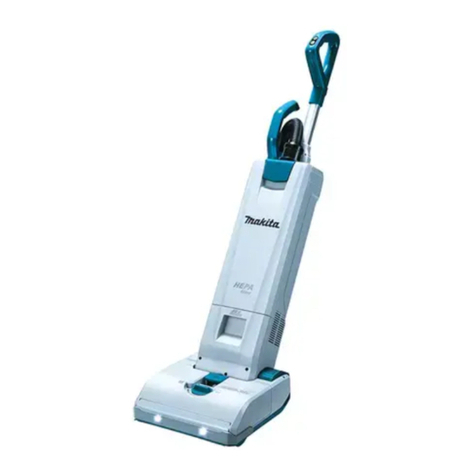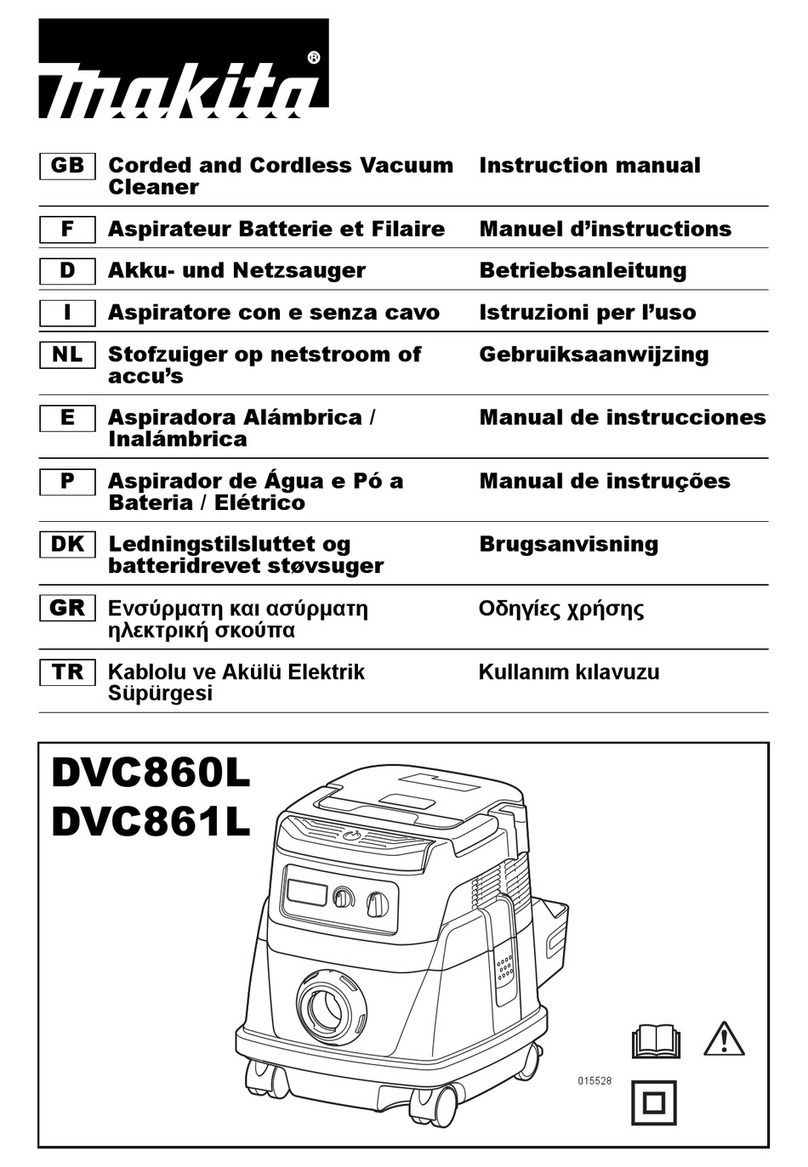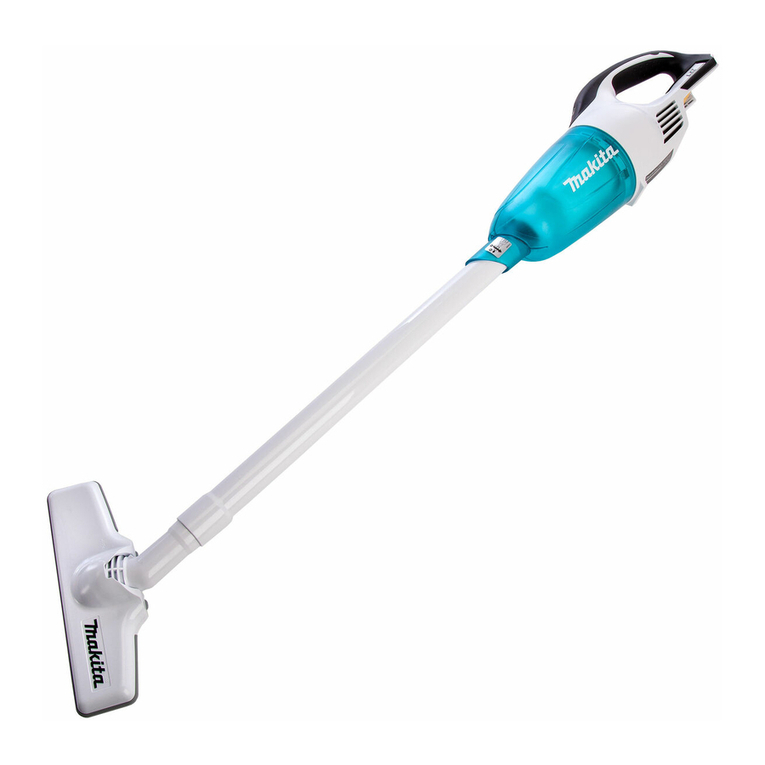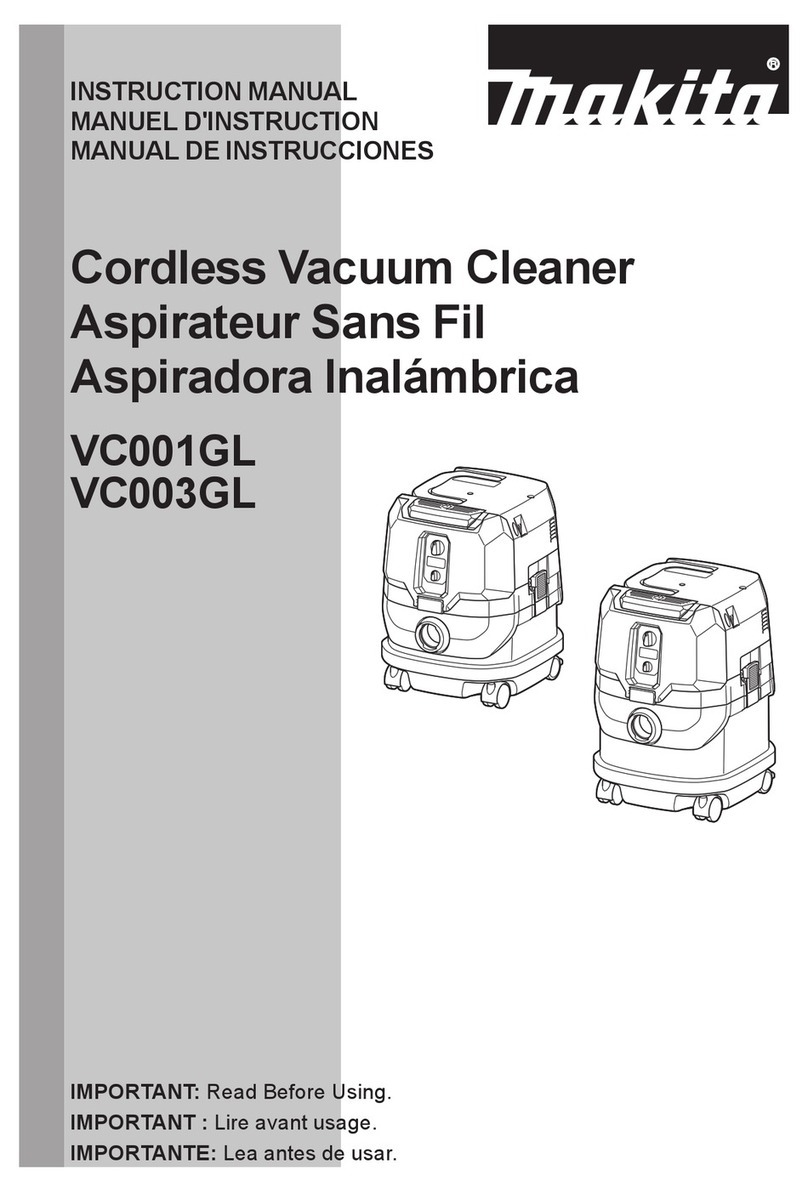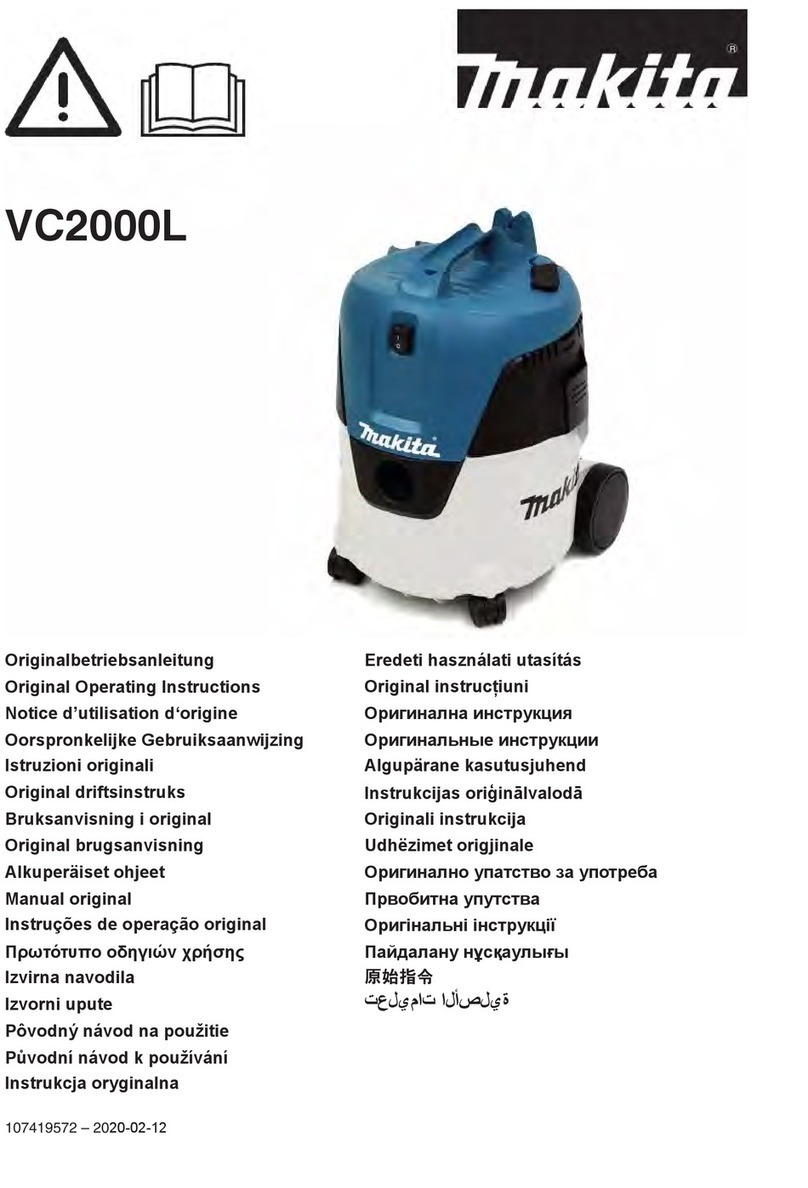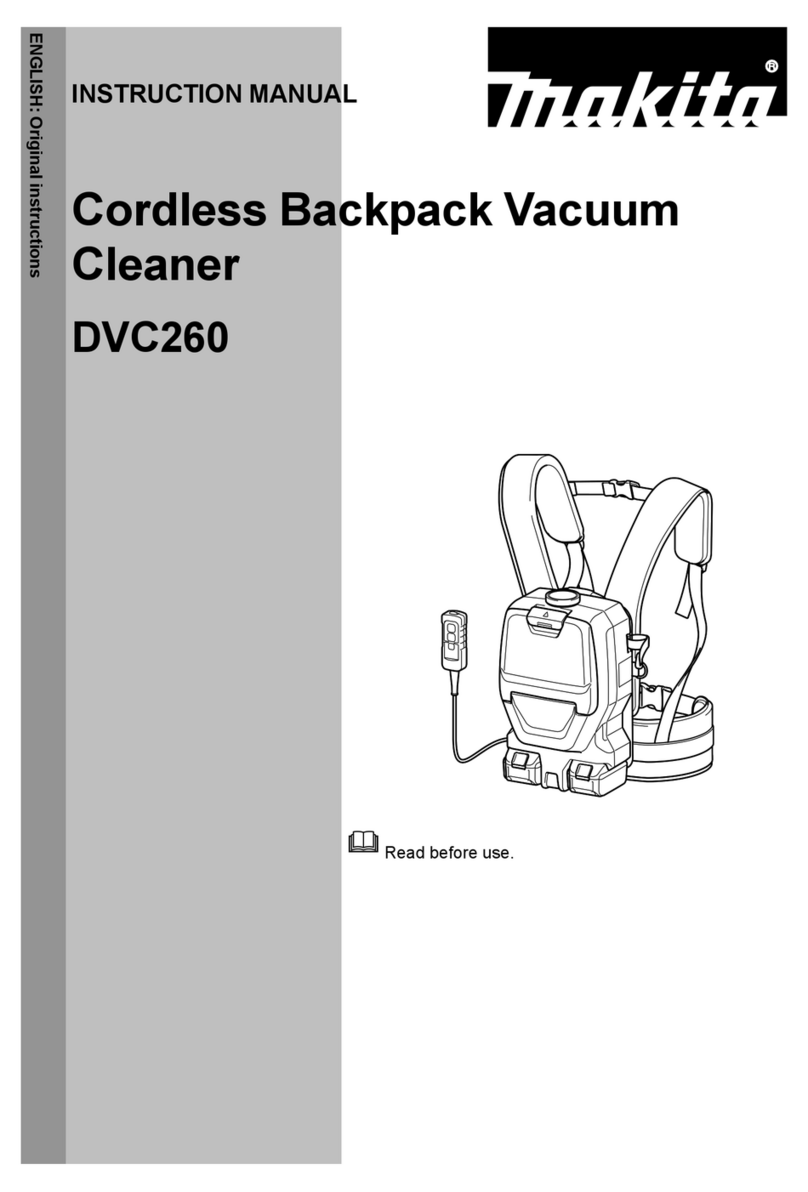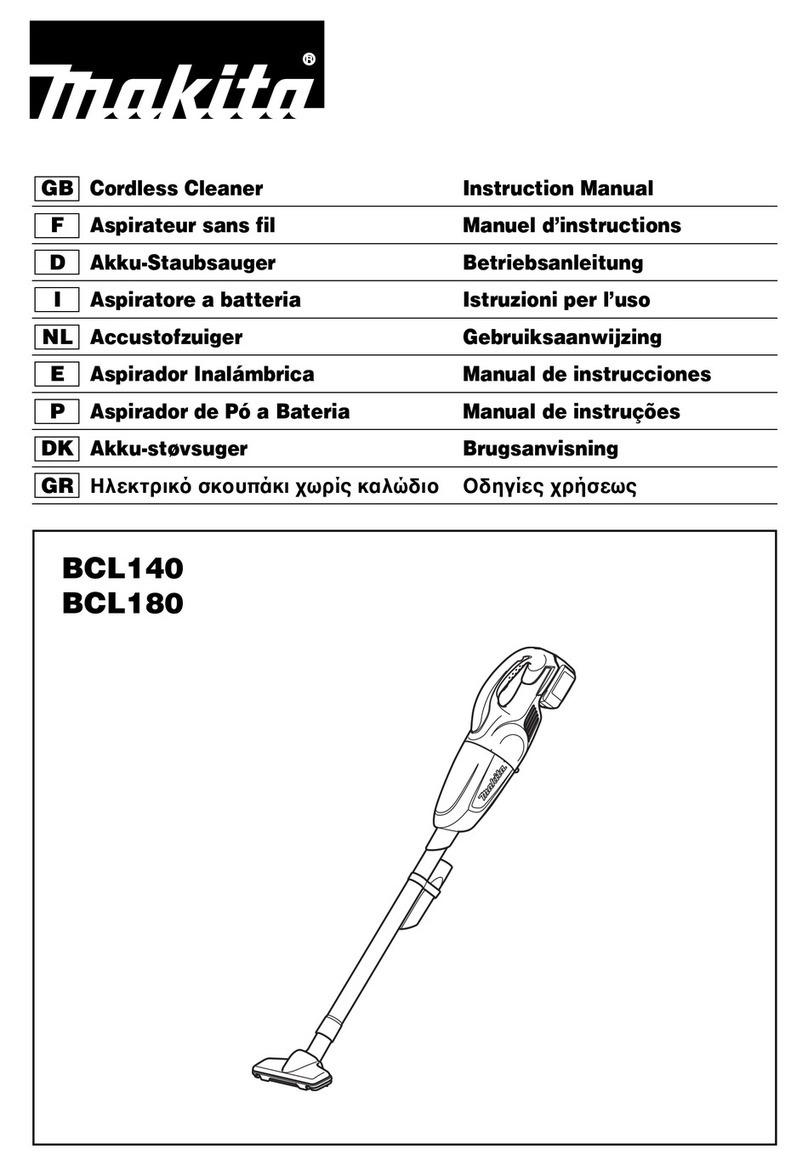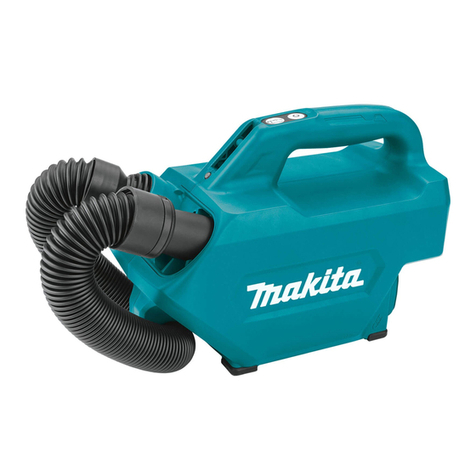
10 ENGLISH
CHECK DAMAGED PARTS. Before further use of
the cleaner, a guard or other part that is damaged
should be carefully checked to determine that it will
operate properly and perform its intended function.
Check for alignment of moving parts, binding of
moving parts, breakage of parts, mounting, and
A guard or other part that is damaged should be
properly repaired or replaced by an authorized ser-
vice center unless otherwise indicated elsewhere
in this instruction manual. Have defective switches
replaced by authorized service center. Do not use
17. REPLACEMENT PARTS. When servicing, use
only identical replacement parts.
18. STORE IDLE CLEANER. When not in use, the
cleaner should be stored indoors.
Be kind to your cleaner. Rough handling can cause
breakage of even the most sturdily built cleaner.
Do not attempt to clean the exterior or interior
with benzine, thinner or cleaning chemicals.
Cracks and discoloration may be caused.
Do not use cleaner in an enclosed space where
Do not operate the cleaner or any tool while
As a basic rule of safety, use safety goggles or
safety glasses with side shields.
Use a dust mask in dusty work conditions.
This machine is not intended for use by per-
sons including children with reduced physical,
sensory or mental capabilities, or lack of expe-
rience and knowledge.
Young children should be supervised to
ensure that they do not play with the cleaner.
Never handle battery(ies) and cleaner with wet hands.
Use extreme caution when cleaning on stairs.
Do not use the cleaner as a stool or work
bench. The machine may fall down and may
result in personal injury.
Before use, operators shall be provided with
information, instruction and training for the use
of the machine and the substances for which
it is to be used, including the safe method of
removal and disposal of the material collected.
The machine should be technically inspected by
the manufacturer, or an instructed person, at least
annually, consisting of, for example, inspection of
proper function of the control mechanism.
When carrying out service or repair opera-
tions, all contaminated items which cannot be
satisfactorily cleaned are to be disposed of;
such items shall be disposed of in impervious
bags in accordance with any current regula-
tion for the disposal of such waste.
Battery tool use and care
1.
the manufacturer. A charger that is suitable for
when used with another battery pack.
-
nated battery packs. Use of any other battery
When battery pack is not in use, keep it away
from other metal objects, like paper clips,
coins, keys, nails, screws or other small metal
objects, that can make a connection from one
terminal to another. Shorting the battery termi-
Under abusive conditions, liquid may be ejected
from the battery; avoid contact. If contact acci-
eyes, additionally seek medical help.
from the battery may cause irritation or burns.
5. Do not use a battery pack or tool that is dam-
may exhibit unpredictable behaviour resulting in
excessive temperature.-
7. Follow all charging instructions and do not
charge the battery pack or tool outside the
-
tions. Charging improperly or at temperatures
SAVE THESE INSTRUCTIONS.
WARNING: DO NOT let comfort or familiarity
with product (gained from repeated use) replace
strict adherence to safety rules for the subject
product. MISUSE or failure to follow the safety
rules stated in this instruction manual may cause
serious personal injury.
Important safety instructions for
battery cartridge
1.
Before using battery cartridge, read all instruc-
tions and cautionary markings on (1) battery
charger, (2) battery, and (3) product using battery.
Do not disassemble battery cartridge.
If operating time has become excessively
shorter, stop operating immediately. It may
result in a risk of overheating, possible burns
and even an explosion.
If electrolyte gets into your eyes, rinse them out
with clear water and seek medical attention right
away. It may result in loss of your eyesight.
5. Do not short the battery cartridge:
(1) Do not touch the terminals with any con-
ductive material.
Avoid storing battery cartridge in a con-
tainer with other metal objects such as
nails, coins, etc.
Do not expose battery cartridge to water
or rain.
A battery short can cause a large current
breakdown.
Do not store the tool and battery cartridge in
locations where the temperature may reach or
exceed 50 °C (122 °F).
